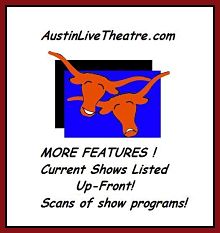
Hacking Theatre in a Networked World
by Robert Matney
April 15, 2013
 |
| Robert Matney |
We come to the theater to satisfy a Luddite urge for something more visceral, more live and less mediated, more unpredictable than a two-dimensional screen provides. It is, then, no surprise that the theater selects for, and cultivates, in its practitioners a reticence to integrate new technology. Let's own up: collectively we are late adopters.
As theater artists, we have an obligation, I think, to remedy this, or we find ourselves sprinting (faster) toward our obsolescence and abdicating our duty to hold a “mirror to nature” in an increasingly technological culture. Let us hack theater for a networked world, using the Internet's numerical, geographical, and temporal scalability to interact with new audiences, insist on an ongoing and authentic relevance for our work, test new forms, and propagate new possibilities while preserving what is essential about our discipline. Let us trust that theater is resilient enough to make this leap as it has made many others, and that it will survive a modest but important re-programming. And of course, in the pursuit of this remedial integration, let us seek methods that integrate deeply into the art and the aesthetic, rather than yield to the easy seduction of bolt-on and gimmicky technical appendages.
Austin, a bubbling cauldron of new works for theater and a world-class center of hi-tech startups should be a focus of this work, and yet its marvelous potential as a capital of innovation for digital integration with performing art remains largely unrealized. There are virtually no dedicated performance spaces with a functional wired internet connection with proximity to the tech booth/performance space, and only one, to my knowledge, offering a connection greater than low-end residential speeds (>15 Mbps down & 1.5 Mbps up).
So our work is cut out for us in making good on these extraordinary possibilities in Austin.
I've been collaborating with Beth Burns at Hidden Room Theatre, Graham Schmidt at Breaking String Theater, Ron Berry at Fusebox Festival, Paul Menzer and Matt Davies at Mary Baldwin College (Staunton, VA), and Philip Arnoult at the Center for International Theatre Development (CITD; Baltimore, MD) to work on disparate pieces of hi-tech integration into the work of theater on stage and off.
Our world is networked, and our theater need no longer be wholly defined by a proscenium arch, a black box, or any physical space (empty or otherwise).
For Mary Baldwin College, we are currently working with the Shakespeare and Performance faculty and graduate students to co-create actorscholar.com as an experimental platform for digital dramaturgy (or "digiturgy," a term recently introduced to me by Cassidy Browning during the Cohen New Works Festival). We seek here more than a simple web publishing site (with fair use and copyright sensitive access-control that attends to professional and academic contexts, of course), but also a means of integrating open APIs and freely available web-based data streams to open up new possibilities for dramaturgical content and analysis (such as the ability to easily plot a plays locations in an interactive map so artist and audience can pull the kind of data they desire about the play's location(s)).
With the CITD, Mr. Arnoult, Susan Stroupe, and I are preparing to digitize and live stream for real-time interaction many of the events of Beyond the Capitals II, an international exchange project funded by the Bilateral Presidential Commission: American Seasons in Russia, a program of the US Embassy in Moscow, and which will travel throughout Russia this May. Our goal is to ensure that all of the American participants in the Beyond The Capitals I project can take the journey with us, engage digitally, and interact with the artists we will be visiting in Russia.
At Fusebox, we are in the early stages of building an Art+Technology platform to feature and sustain exploratory work, education, and presentations that innovate in the area of art and technology integration. This year's festival features a number of exciting works, including Motion Bank and Ant Hampton's Cue China.
In the Hidden Room, we seek to solve a distinct art/technology challenge with each project. The first challenge we undertook was to patch together two disparate geographical locations into one contiguous aural and visual performance space. In You Wouldn't Know Her, She Lives In London (named so in Austin) / You Wouldn't Know Him, He Lives In Texas (named so in London), we teamed up with Mimi Poskitt and Look Left Look Right theater, and tethered a site-specific venue in Austin with the Roundhouse in London, with each venue containing a portion of the cast and a full in-location public audience. We picked up video in each location and cross-displayed it, "lining up" the people and equipment for mutual visibility for all participants. Additionally, we microphoned and cross-amplified the spaces such that if an Austinite opened a candy wrapper during the performance he could successfully annoy the audience in Austin and London. We then used a separate computer in London to encode the video conversation between the Austin and London locations, streaming the results to the web for a third, online audience. In all locations, a Twitter-hashtag- delimited text stream was presented, and all audiences were encouraged to interact with each other and the performers for shared textual visibility.
Hidden Room's next project was to tune our technical process to enable transcontinental rehearsal. With Rose Rage, we conducted our rehearsals with actors located in London, Cornwall, Virginia, and Austin. This process took us through 75% of the rehearsal period before all gathered in Austin to present a run of this six-hour production.
Click 'Read more' to continue or click HERE to go to the article at www.howlround.com




No comments:
Post a Comment